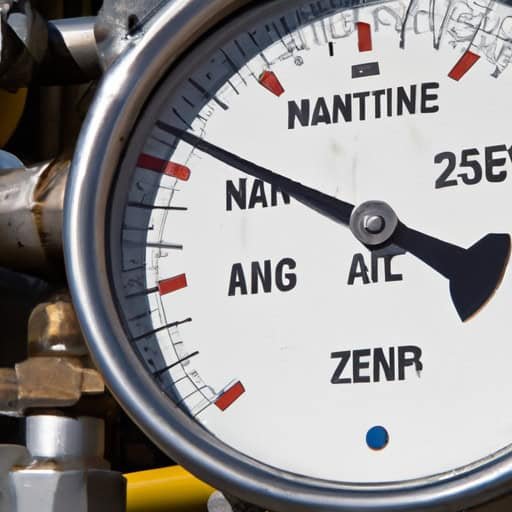Maintaining well water pressure tanks is essential to ensure a consistent and reliable water supply in your home. Understanding the maintenance requirements for these tanks will help you avoid costly repairs and potential water shortages. From inspecting the tank for leaks to regularly checking the pressure levels, a proactive approach will extend the lifespan of your well water pressure tank and ensure optimal performance. By following a few simple maintenance steps, you can enjoy uninterrupted water pressure and peace of mind.
Inspecting the Tank
When it comes to maintaining your well water pressure tank, one of the first steps is to inspect the tank itself. This involves checking for physical damage, such as cracks or dents, that could compromise the integrity of the tank. Any visible damage should be addressed promptly to prevent further issues down the line.
Another important aspect of inspecting the tank is examining the fittings and connections. Over time, these fittings can become loose or worn, leading to leaks or inefficiencies in the system. Take the time to inspect each fitting and connection to ensure they are secure and in good condition. If any issues are found, tightening or replacing the fittings may be necessary.
Lastly, when inspecting the tank, it’s crucial to examine the air charge. The air charge in the tank is responsible for maintaining proper pressure levels. If the air charge is too low or too high, it can affect the performance and lifespan of the tank. Use a tire pressure gauge to check the air charge and adjust it if needed. Refer to the manufacturer’s instructions or consult a professional for guidance on the appropriate air charge level for your specific tank.
Cleaning and Flushing
Regular cleaning and flushing of your well water pressure tank are essential for maintaining its efficiency and preventing issues caused by sediment buildup. Start by removing any sediment and debris that may have accumulated at the bottom of the tank. You can do this by draining the tank and thoroughly rinsing it out. Be sure to disconnect the power and follow safety precautions when working with the tank.
After removing sediment and debris, it’s important to flush the tank to ensure all contaminants are removed. This can be done by opening the tank’s drain valve and allowing water to flow freely for a few minutes. Flushing the tank will help prevent clogs, maintain water quality, and prolong the lifespan of the tank and associated components.
Checking the Pressure
Monitoring the pressure in your well water pressure tank is crucial for ensuring proper functionality and preventing damage. The pressure gauge, located on the tank, provides a visual representation of the current pressure levels. Regularly check the gauge to ensure the pressure remains within the desired range.
If you notice the pressure is consistently too low or too high, it may be necessary to adjust the pressure switch. The pressure switch is responsible for signaling the pump to turn on or off based on the water pressure in the tank. Consult the manufacturer’s instructions or seek professional guidance on how to properly adjust the pressure switch to maintain optimal pressure levels.
Testing the Water Quality
Maintaining good water quality is essential for your health and the longevity of your well water pressure tank. One way to assess water quality is by checking for any discoloration. If you notice a change in the color of the water coming out of your faucets, it could be a sign of contamination or other issues within the system. Promptly address any water discoloration by contacting a water treatment professional to determine the cause and appropriate course of action.
In addition to checking for discoloration, it’s important to test the water for bacteria or other contaminants. There are various testing kits available that allow you to assess the presence of harmful substances in your water. Regularly testing your water will help ensure its safety and allow for early detection of potential problems. If any issues are detected, consult with a water treatment professional to determine the necessary steps to address the problem.

Maintaining the Pump
The pump is a critical component of your well water system, and regular maintenance is key to keeping it in good working condition. Start by inspecting the pump motor for any visible damage, such as frayed wires or overheating. If any issues are detected, it’s important to have them addressed by a professional to prevent further damage or potential safety hazards.
Additionally, checking the electrical connections is crucial in maintaining the pump’s functionality. Loose or damaged electrical connections can lead to power interruptions or even pump failure. Take the time to inspect the wires and connections, ensuring they are secure and free from any signs of damage. If any issues are found, consult a professional electrician to address the problem.
Preventing Freezing
If you live in an area with cold winters, preventing freezing within your well water pressure tank is essential to avoid damage to the system. One way to prevent freezing is by insulating the tank and pipes. Insulating materials, such as foam sleeves or heat tape, can help maintain the temperature and prevent freezing.
In addition to insulating, it’s important to drain the tank for winterization. This involves completely emptying the tank to prevent any water from freezing and expanding within the tank, potentially causing damage. Refer to the manufacturer’s instructions or consult a professional for guidance on properly draining the tank for winterization.
Inspecting Expansion Tanks
Expansion tanks are often part of well water pressure systems and require regular inspection to ensure proper functioning. Checking for leaks is an important part of inspecting expansion tanks. Leaks can lead to loss of pressure, water damage, and increased strain on the system. If any leaks are detected, they should be promptly addressed by a professional to prevent further damage.
Testing the air pressure in the expansion tank is another important step. Similar to the main well water pressure tank, the air pressure in the expansion tank must be maintained at the appropriate level. Use a tire pressure gauge to check the air pressure and adjust it if necessary. Consult the manufacturer’s instructions or seek professional guidance on the appropriate air pressure level for your specific expansion tank.
Replacing Worn Components
Over time, certain components of your well water pressure system may become worn or faulty and require replacement. One component that commonly needs replacement is the pressure switch. The pressure switch is responsible for controlling the operation of the pump based on water pressure levels. If you notice that the pressure switch is not functioning properly, it’s important to have it replaced by a professional to ensure the system continues to operate efficiently.
In addition to pressure switches, damaged or deteriorating pipes should be repaired or replaced promptly. Leaking or damaged pipes can lead to water loss, pressure issues, and potential water damage. If you notice any signs of pipe damage, such as leaks or reduced water flow, contact a professional plumber to assess the situation and make the necessary repairs or replacements.
Sealing and Insulating
To maintain the efficiency of your well water pressure tank and prevent issues such as air or water leaks, it’s important to seal any openings or cracks. Check for any air or water leaks around the tank and its fittings. Use sealant or plumber’s tape to seal any areas where leaks are detected.
Additionally, insulating the tank can help prevent condensation and improve overall system performance. Condensation can lead to moisture buildup, which can promote corrosion and other issues within the tank. Insulating materials, such as foam insulation, can be applied to the tank to help regulate temperature and prevent condensation.
Hiring Professional Services
While many maintenance tasks can be performed by homeowners, there are certain situations where professional help may be necessary. Scheduling regular maintenance with a professional service provider is a wise choice to ensure all aspects of your well water pressure system are properly inspected and maintained.
Furthermore, seeking professional help for complex issues is crucial. If you encounter any problems that you are not comfortable addressing on your own or that require specialized knowledge or equipment, it’s best to contact a professional. They can assess the situation, provide expert advice, and perform any necessary repairs or replacements to keep your well water pressure system in optimal condition.
By following these maintenance requirements for well water pressure tanks and taking a proactive approach to care for your system, you can ensure its longevity and optimal performance. Regular inspections, cleaning, pressure monitoring, water quality testing, pump maintenance, freezing prevention, expansion tank inspection, component replacement, sealing, and professional services are all important aspects of maintaining a healthy and efficient well water pressure system.



